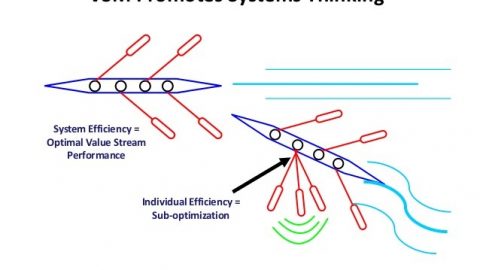
In this section, we will continue to explore the remaining 6 tips that can help you build a value flow diagram.
4. Assign a value stream map manager to lead the mapping effort.
Input from team members and stakeholders is important, but appoint (or elect) one team member to draw the entire value stream map. This ensures that the manager understands the material and information flows.
5. Walk through the process to ensure that the flow of materials and information is accurate.
Make sure your map reflects the reality of the process—verifying this by following the process from start to finish can reveal crucial details you might have missed.
6. Focus on one small step at a time.
Make sure you capture each step accurately. For example, don’t trust the clock on the wall to measure cycle times—use a stopwatch.
7. Identify critical paths and bottlenecks.
Your map may reveal a number of potential areas for improvement. Which ones will make the biggest difference in meeting customer requirements?
8. Create a future state map from the current state map.
Your current-state map suggests where to focus your efforts, so you can draft a map that shows how value will flow through an improved process.
9. Limit the improvement plan to achieve the future state to a one-page document, if possible.
List the actions that need to happen to improve the process. Use simple, clearly-defined steps.
10. To implement the improvement plan quickly, focus on individual areas.
Take a step-by-step approach to putting your plan in action, then update your future state map as you implement each step.
Value stream mapping provides a great way to make changes and improvements to the process without doing so at the expense of other processes. Creating a value stream map of the current state of your process helps you focus on areas of waste such as excess inventory, non-value-added time, and multiple operators. If we don’t understand the current process, we can’t really make intelligent decisions about how the future current state might or should look.
At the end of the day, the goal is to develop a corporate culture that provides the best possible product to meet or exceed customer needs and expectations. This is ultimately done by making continual improvements to the value stream. As our customers’ needs and expectations evolve, so also will our value streams need to change and constantly evolve.
Source: Aleanjourney